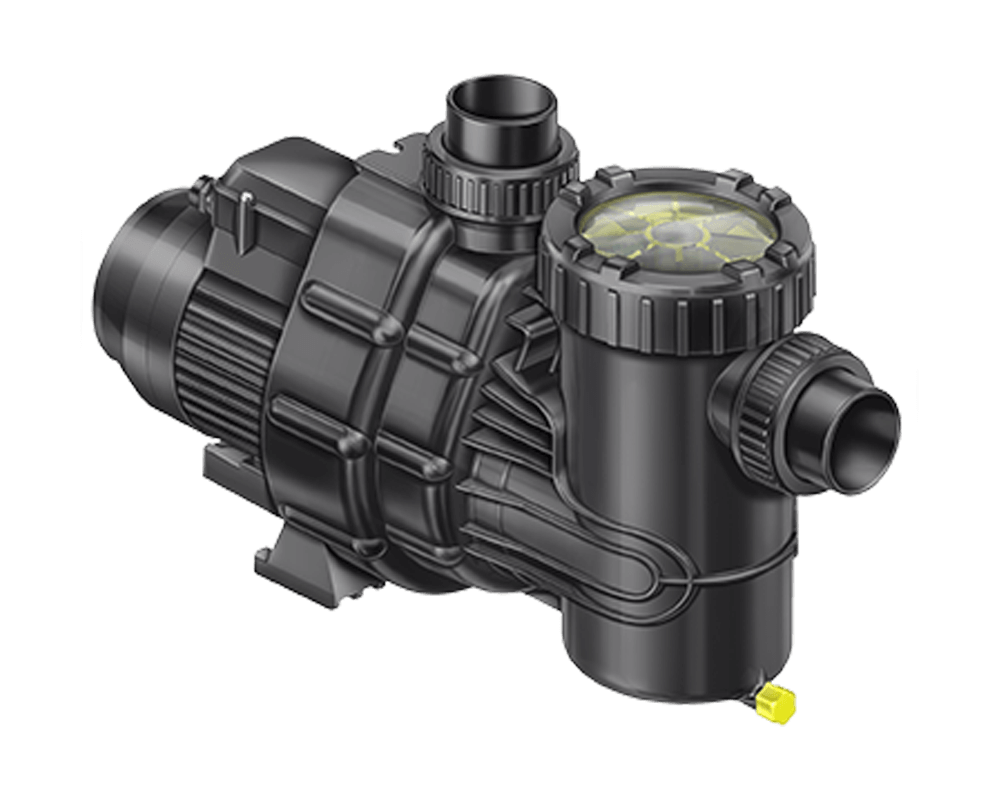A beautiful fishpond enhances every garden. However ponds remain ecosystems that can collapse. A reliable filter pump provides constantly good water quality and has a stabilising effect on the biological balance.
Small to medium-size fish and garden ponds are easy to create yourself. There are diverse readymade pools and construction sets available in stores. However if you line the ground of the pond with foil, you can determine the size and shape of your pond individually and adjust it according to the whole image of your garden.
Regardless of the shape and size, you should consider some important aspects in advance in order for your fishpond project to be a success:
LOCATION
- A pond requires not only daylight, but also sufficient sun (approx. 4 – 6 hours daily), in order for water plants and fish to develop.
- The more distance to trees, the less foliage you will have to remove from the pond.
SHORE AREA
- The shore area surrounding the pond should allow enough room to move in order not to complicate maintenance work.
- Stepping-stones and bridges require solid foundations in order to avoid risk of accidents.
POND PLANTS
- Water plants in the fishpond don’t only slow down the build-up of algae and create better water quality, but they offer fish natural protection from intense sun and birds of prey. Thus they do half of your job for you!
FISH POPULATION
- Wait a few weeks before you add the fish to the pond to allow the water plants to take root, acclimatise and fully function.
- Your pond should reach a depth of 1.20 to 1.50 m in one place at least. This will ensure that your fish have enough room and can swim around happily. Ensure there is sufficient room for all of your fish.
OXYGEN
- In order to ensure healthy flora and fauna, the pond water must be ventilated sufficiently and must have an oxygen supply. The pond pump filters out impurities, suspended solids and pollutants and supports the biological self-cleaning process. A small waterfall or fountain can help to support this process.
- You should clean the ground of the pond and remove branches, foliage and mud regularly in order to avoid rot and the release of dangerous gasses.
AUTUMN
- In autumn fish arm themselves for hibernation, therefore they eat a bit more and prefer a more nutritional food mix.
- If the wind blows a lot of leaves around, it is worth covering the pond with a net so that you have less to pick out of the pond.
- Before the first frost, you should remove twigs, rotted foliage and mud from the bottom of the pool. Otherwise harmful gasses may be released and valuable oxygen lost.
WINTER
- From temperatures of 10 °C, fish’s metabolism slows down and they eat less – they start to hibernate. They require less food, but prefer a special winter food mix.
- Goldfish are naturally well armed and can survive the winter in the fishpond. Koi survive up to temperatures of about 5 °C. However some exotic fish belong in the aquarium during the winter.
- The fishpond must never freeze over completely, otherwise the fish will suffocate. With ice-free devices, the water surface will remain free of ice even at the height of winter, enabling gasses to escape unhindered.
- Should the fishpond freeze over completely, caution is required. Noise and disruption will cause the fish stress. It is best to defrost parts of the ice with warm water in order not to disrupt the fish.
WE RECOMMEND THESE PUMPS FOR YOUR FISHPOND

AQUA PLUS
Self-priming with flexible screws.
For every project.

AQUA MASTER
The profi machine for the
greater tasks.

AQUA VARIO PLUS
With energy and cost-saving
motor technology.